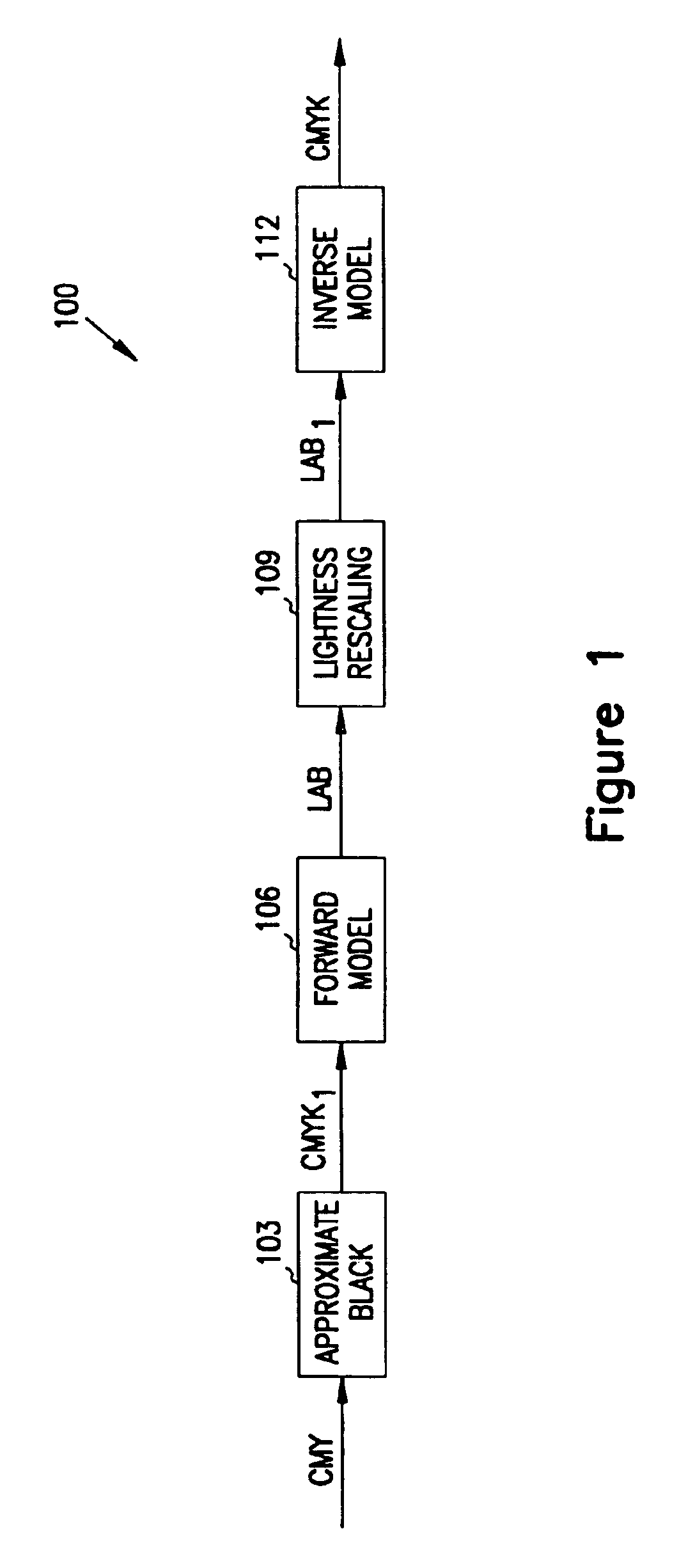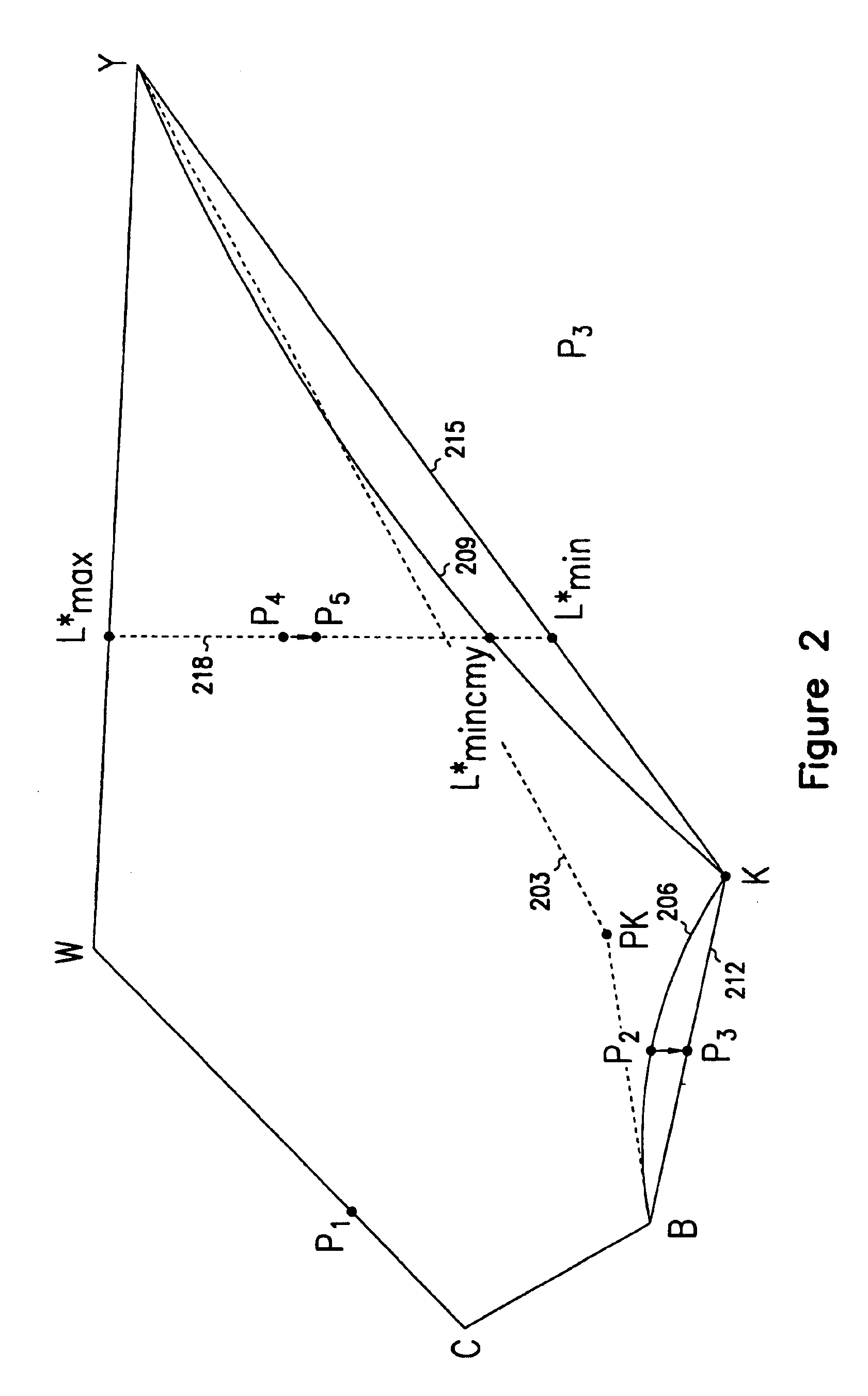Method and apparatus for expanding a color gamut
a color gamut and color printing technology, applied in the field of color printing, can solve the problems of not preserving colorimetric relations, not allowing the use of the whole printer gamut, and failing to faithfully reproduce the original imag
- Summary
- Abstract
- Description
- Claims
- Application Information
AI Technical Summary
Benefits of technology
Problems solved by technology
Method used
Image
Examples
Embodiment Construction
The present invention provides a method for relating a three-dimensional CMY coordinate system to CMYK colorant amounts in a way that increases the utilization of a printer gamut volume. A printer gamut, in one embodiment, is an arbitrary set of colors. In general, adding a black colorant to any combination of CMY colorants does not result in a color with more chroma. Therefore, a CMYK gamut can be obtained from a CMY gamut by expanding the CMY gamut towards lower lightness values. Use of black colorant on the gray axis is enforced by modifying the initial distribution of CMY points through an approximate black generation transform. Lightness values of a resulting set of points in CIELAB space are scaled to fill the four-color gamut volume. The CMYK values corresponding to the modified CIELAB colors are found by inverting a printer model. This last process determines a specific black use rate which can depend on the region of the color space.
FIG. 1 is a flow diagram of one embodimen...
PUM
 Login to View More
Login to View More Abstract
Description
Claims
Application Information
 Login to View More
Login to View More - R&D
- Intellectual Property
- Life Sciences
- Materials
- Tech Scout
- Unparalleled Data Quality
- Higher Quality Content
- 60% Fewer Hallucinations
Browse by: Latest US Patents, China's latest patents, Technical Efficacy Thesaurus, Application Domain, Technology Topic, Popular Technical Reports.
© 2025 PatSnap. All rights reserved.Legal|Privacy policy|Modern Slavery Act Transparency Statement|Sitemap|About US| Contact US: help@patsnap.com



